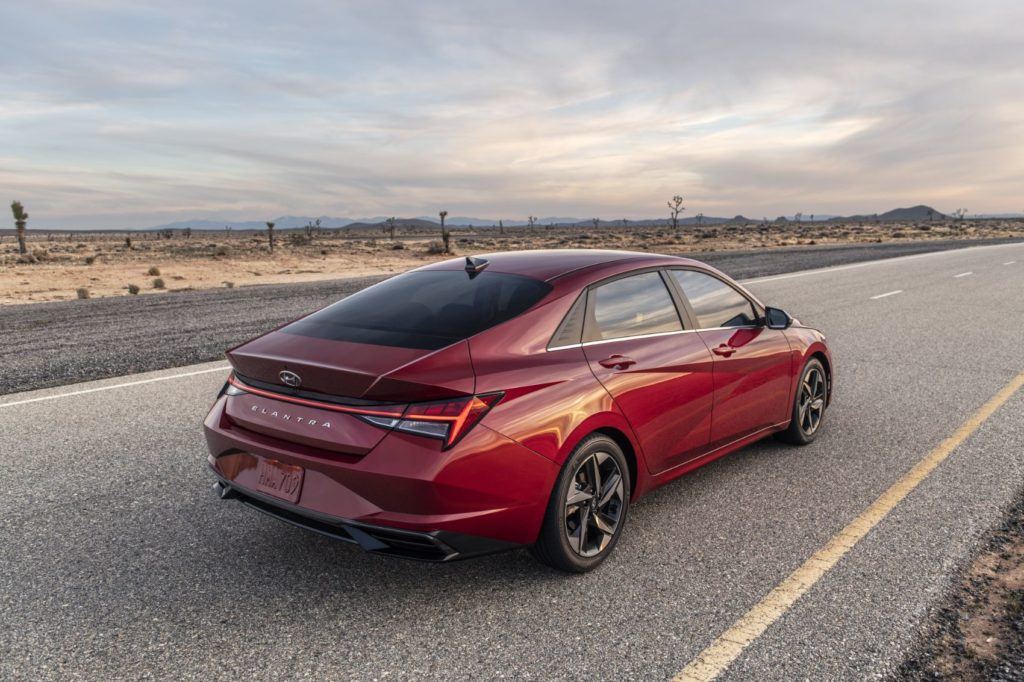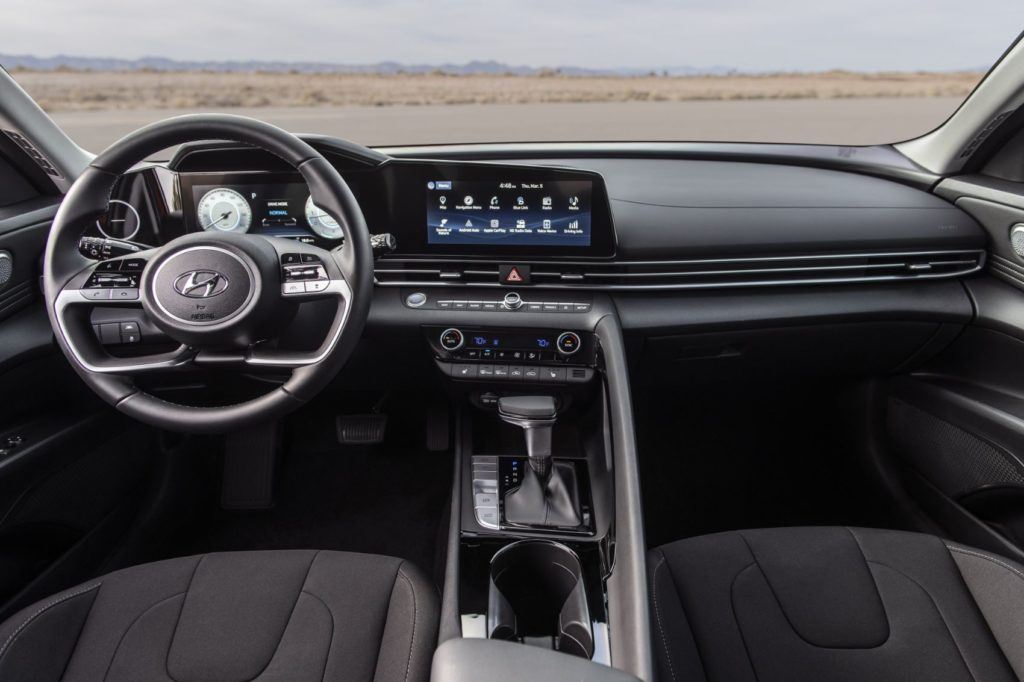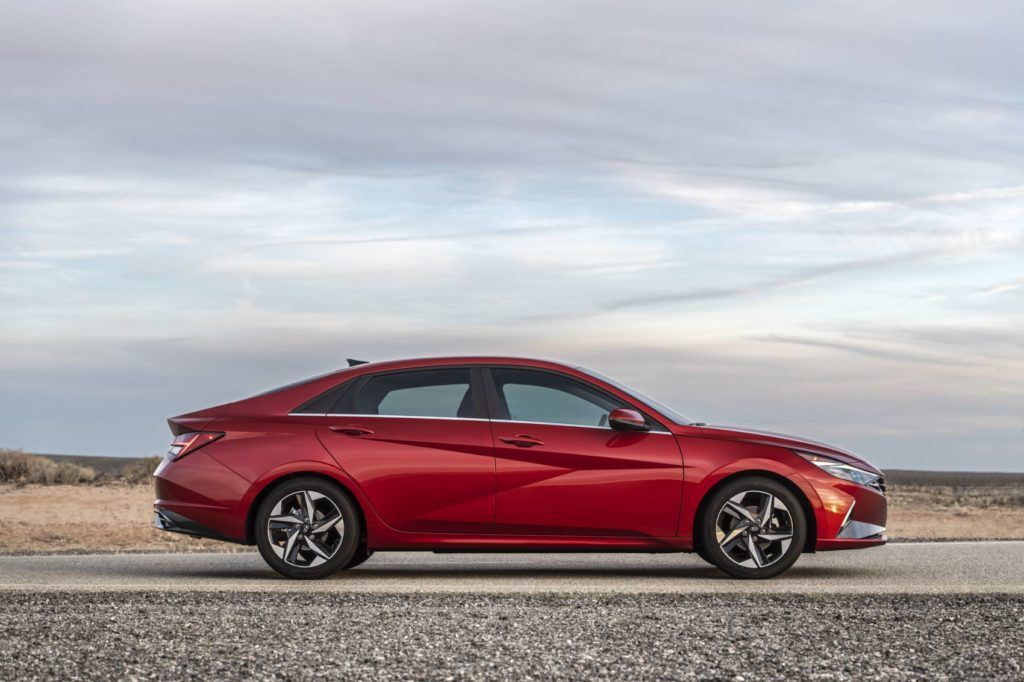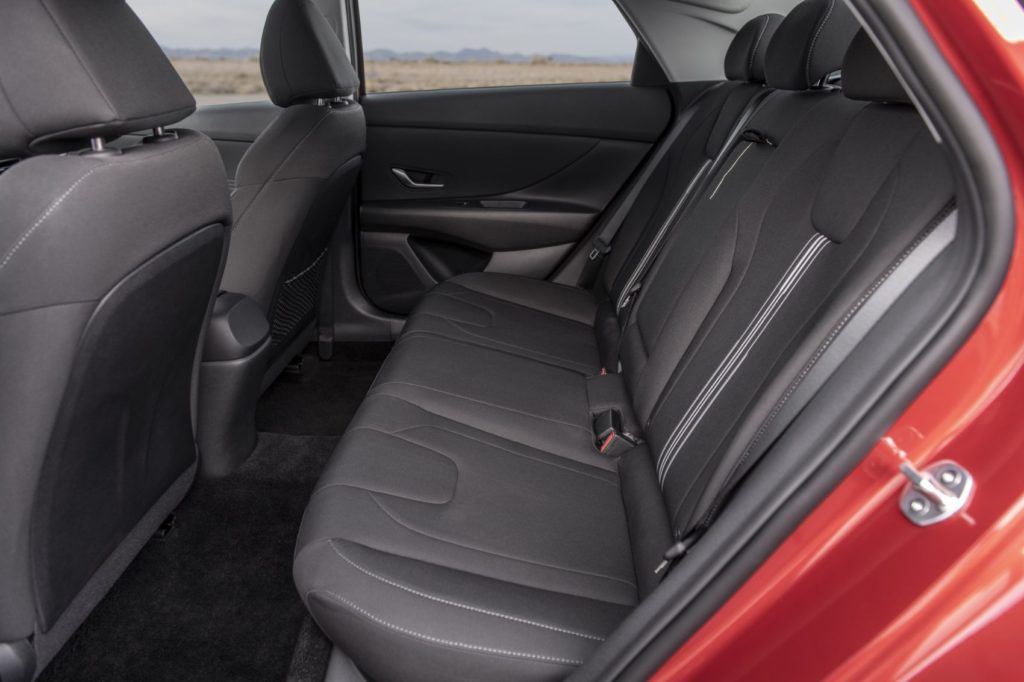Just when we thought conventional four-door sedans were afterthoughts, along comes the 2021 Hyundai Elantra. From the onset, the Elantra is a bigger, sleeker, and wider car, which is great if you want to lead the supersized compact segment dominated by the Toyota Corolla and Honda Civic. I have an inkling for Elantras in general. I’ve driven lots of Elantras over the years, although I never had the chance of owning one.
And the introduction of the 2021 Hyundai Elantra makes me think I was missing out.
Elantras & Lancers: Setting The Stage
I’ve had the privilege of owning a bevy of Japanese cars, most particularly Mitsubishi sedans and coupes from the previous millennia. The Elantra started its life using a pair of Mitsubishi-designed 4G15 DOHC 1.5-liter and 4G61 1.6-liter DOHC engines. Back in the day, Hyundai Automotive was in its early stages of development, which meant the company had to rely on existing platforms and powertrains to kickstart a new generation of automobiles.
The first-generation J1 Elantra, on the market from 1990 to 1995, is mechanically related to the Mitsubishi Lancer (or Mirage in some parts of the world). And you know what, Mitsubishi was the bomb in the early and late 90s. You’ve heard of the Mitsubishi Lancer Evolution series? You see, the Evolution I (yes, the very first Lancer Evo) was born in 1992 and was based on the current-generation Lancer at that time. The original Evo rally car was based on the 1987 Galant VR-4, but Mitsubishi shifted to the Lancer as rally cars were becoming smaller to conquer tighter courses.
Since Elantras are Lancers in disguise, the former inherited the famed sharp and agile handling of the latter. Granted, Lancers were not as comfy as Corollas or Sentras from previous eras, but they sure were the sportiest and best-handling of the bunch. I’ve owned a Sentra, two Lancers, and a Galant from roughly the same eras (the eighth-gen Galant is the best-handling Japanese sedan I’ve ever driven, hands down).

2021 Hyundai Elantra: Looking The Part
Now that the new Elantra is here (and both the Lancer and Galant were discontinued), it made me reconsider my previous thoughts. Back then, if you were already behind the wheel of the original car, why bother with a clone? Everything changed when Hyundai came up with its Alpha and Beta series of engines for the second-gen J2 Elantra. Since then, Hyundai slowly began etching its own identity, but the Mitsubishi DNA was still there.
The outgoing sixth-gen Elantra is, without a doubt, the best-looking Elantra, and I’ve driven it many times. Dare I say it was more refined than any Mitsubishi Lancer, including the last ninth-gen model. Also, I’m not sure if it’s a wise idea to bless the seventh-generation Elantra with the new Sonata’s daring silhouette. But the more I look, the more I’m convinced it works.
What’s not hard to notice is Elantra’s bigger body. It’s longer (2.2 inches) and wider (one inch) than the outgoing Elantra, and it’s also riding on a longer 107.1-inch wheelbase. The new Elantra is longer and wider than both the Corolla and Civic. It even has the longest wheelbase among the current crop of compacts save for the new Mazda3. In short, the Hyundai Elantra is all grown up.
“We’ve sold more than 3.4 million Elantras here in the U.S. and more than 13.8 million worldwide,” said José Muñoz, President and CEO, Hyundai Motor America. “And the new, captivating look is going to bring excitement to a whole new generation of buyers.”

“Parametric Dynamic” Styling
Hyundai refers to the new Elantra’s styling as a “Parametric Dynamic” design, but allow me to translate: The 2021 Hyundai Elantra is a four-door sedan with a coupe-like slanting roofline. It also happens to look similar to the new Sonata at times. Viewed from the sides, however, the new Elantra can look like a smaller Honda Accord (I swear it’s because of the sloping roof design).
And this is probably up for debate, but the strong fascia is a love-it or hate-it moment upon first glance.
Calling it “bold” is an understatement, but the wider and cascading grille design, along with a pair of scowling headlights, are enough to revolutionize the Elantra’s façade. Combined with strong creases on the hood and sharper body lines, the 2021 Elantra is either eye-catching or polarizing depending on your tastes, but the expressive styling is a welcome change.
“The fresh esthetic was completed through unconventional lines and a face that broke a taboo in automotive design,” said Luc Donckerwolke, Executive Vice President and Chief Design Officer of the Hyundai Motor Group. “Like the first generation, the seventh-generation Elantra has a bold character.”
The rear is highlighted by a wide horizontal line extending across the center of the trunk, which stretches to the vehicle’s edges. From the back angle, the new Elantra gives the impression of a proper coupe, which is nice.

Roomier Interior? You Bet!
Along with a bigger body is a bigger cabin, and the Elantra gladly obliges. With 40.6 inches of front headroom and 37.3 inches in the rear, it bests the Civic, Mazda3 sedan, Nissan Sentra, and Toyota Corolla despite having a lower roof and coupe-like profile. The longer wheelbase and marginally longer rear overhang also mean loads of rear legroom and trunk space. The new Elantra has the most rear legroom (38.0 inches) among all compact cars. It also has a bigger trunk (14.2 cubic feet) than a Corolla or Mazda 3.
The all-new interior design is worthy of praise. Higher trim models receive a pair of 10.3-inch displays similar to the Mercedes-Benz MBUX system. You’ll also find slim air vents and a bevy of soft-touch materials – including a large grab handle for the passenger to hang on to. Is this a sign of things to come, namely a high-performance Elantra N-model?
- Related: Understanding your Hyundai warranty and what it covers.
2021 Hyundai Elantra: Gas & Hybrid Options
The Elantra SE, SEL, and Limited are powered by a 2.0-liter four-cylinder MPI Atkinson Cycle engine. This motor is good for 147 horsepower and 132 lb-ft. of torque, and is paired with a CVT transmission to achieve the highest possible fuel economy. Hyundai calls it an IVT or Intelligent Variable Transmission. It has a chain design instead of conventional push belts. According to Hyundai, this new gearbox improves low-speed acceleration and fuel economy.
Meanwhile, the 2021 Elantra Hybrid has a smaller 1.6-liter four-banger paired with an electric motor. The combined system output is 139 horsepower and 195 lb-ft. of torque. The hybrid model makes good use of a six-speed dual-clutch automatic. It also has a sportier multi-link rear suspension than gasoline-only models.
“While some manufacturers no longer see the value in the car side of the business, we’re doubling down by offering an all-new model with both gas and hybrid powertrains,” Muñoz said of the 2021 Hyundai Elantra.
Hyundai has yet to release the official fuel economy numbers for both engines, but the Elantra Hybrid is expected to breach the 50 mpg barrier in the combined cycle.

Fantastic New-Age Tech
Wireless Apple CarPlay and Android Auto are standard, even without the optional 10.25-inch display screens. The cabin is also governed by an onboard voice recognition system, accessed via the “push to talk button” on the steering wheel. You can use the feature to adjust a number of fan and climate settings, including turning on the heated seats.
Hyundai’s Blue Link Connected Car System for the Elantra uses embedded telematics. Drivers can remote-start their vehicles and control interior temperatures using the MyHyundai smartphone app. Via the Blue Link voice controls, you can ask your Elantra to find the nearest burger or coffee joint or retrieve the scores from last night’s Red Wing’s game.
Also, the 2021 Hyundai Elantra is equipped with mood lighting with 64 colors to choose from. Why anyone would need 64 colors is beyond us, but there you go.
2021 Hyundai Elantra: Safety Features
Standard safety features for the 2021 Hyundai Elantra include lane-keeping assist; automatic emergency braking with pedestrian detection; automatic high beams; lane-following assist; and a driver attention warning system that chimes in if it senses the driver is tired, fatigued, or dozing off. These are part of the SmartSense package.
Optional features for the SmartSense package include blind-spot detection and collision avoidance, smart cruise control; Highway Driving Assist; Safe Exit Warning; and reverse collision avoidance. In terms of the 2021 Elantra’s architecture and chassis, Hyundai says the new platform improves safety by way of a multi-load path structure.

2021 Hyundai Elantra: Pricing & Availability
The 2021 Hyundai Elantra is slated to arrive near the end of 2020. Production is at Hyundai’s plant in Ulsan, South Korea, and the Hyundai Motor Manufacturing Plant in Alabama. Pricing will be announced closer to the intended launch date.
Alvin Reyes is the Associate Editor of Automoblog. He studied civil aviation, aeronautics, and accountancy in his younger years and is still very much smitten with his former Lancer GSR and Galant SS. He also likes fried chicken, music, and herbal medicine.
2021 Hyundai Elantra Gallery
Photos & Source: Hyundai Motor America.

























